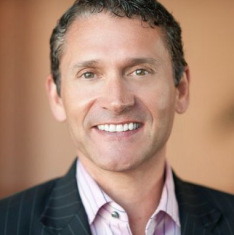Is LinkedIn killing the trade press?
 In this cross-posting from Mumbrella Asia Steve Blakeman shares his experience using LinkedIn’s publishing service, and wonders if the business social network has replaced the trade media as the best place for executives to voice their opinions.
In this cross-posting from Mumbrella Asia Steve Blakeman shares his experience using LinkedIn’s publishing service, and wonders if the business social network has replaced the trade media as the best place for executives to voice their opinions.
There has been a quiet revolution over the past 8 months since LinkedIn fully launched it’s ‘Publishing’ service – now everyone has the opportunity to be their own author, curator and commentator without the need to have a publication validate their work. Just over 1 million individuals have now published on the platform and 45 per cent of its readers are in the upper ranks of their industries (i.e. managers, directors and CEOs). Impressive stats right?

I’ve been writing for various trade publications for many years now and was only enticed into publishing on LinkedIn after Andy Goldman (Global Agency Lead for LinkedIn) persuaded me to simply publish the same articles on LinkedIn. Frankly, it was nothing short of a revelation. The numbers associated with the pieces were much higher than I had initially imagined with most items racking up at least 1000 verified views. The aforementioned Mr Goldman attributes this kind of resonance to the concept of ’emotional disruption’:


I feel better informed about the Linked In ‘publishing’ service now.
Thanks Robin!
PS Your readers are more annoying than your writers. Can Linked In make the same claim?
The LinkedIn self publishing product is as good as the author. So many self appointed ‘CEO’s’ of a company employing themselves are spamming my feed. Comments / engagement can be very coy because it isn’t a personal point of view. It’s not real, its all bullshit bingo. LinkedIn are offering a very easy and capable way to publish. Could an algorithm rank the crap from the quality? Usually a publishing house will, although if you take a look at some who appear to focus purely on advertorials, you could be mistaken. We shall see, the potential is there, although the two key audiences on LinkedIn (correct me if I am wrong) are sales and recruitment / HR.
Linkedin has simply devolved into memes. I’m expecting to see a cat meme in my feed within 2015.
For any company rolling out a content marketing strategy, there are many LinkedIn positives vs the Trade Press
1. It allows you to control your message
2. It’s a positive, supportive place
3. It’s global
4. The reach is not only surprisingly good, it’s also definable
5. It allows your own company to share and share-in your content
Linkedin Pulse and programmatic buying are flavour of the month, but thankfully for us left in B2B publishing they have zero content curation. People will get sick of irrelevant Pulse notifications on their mobiles as quick as they did for LinkedIn Group email updates. When they find an algorithm, or a trained monkey, for the role of a trained B2B editor, we can head into retirement t, but still some way off I believe. Also, Google does not like content being duplicated on LinkedIn.